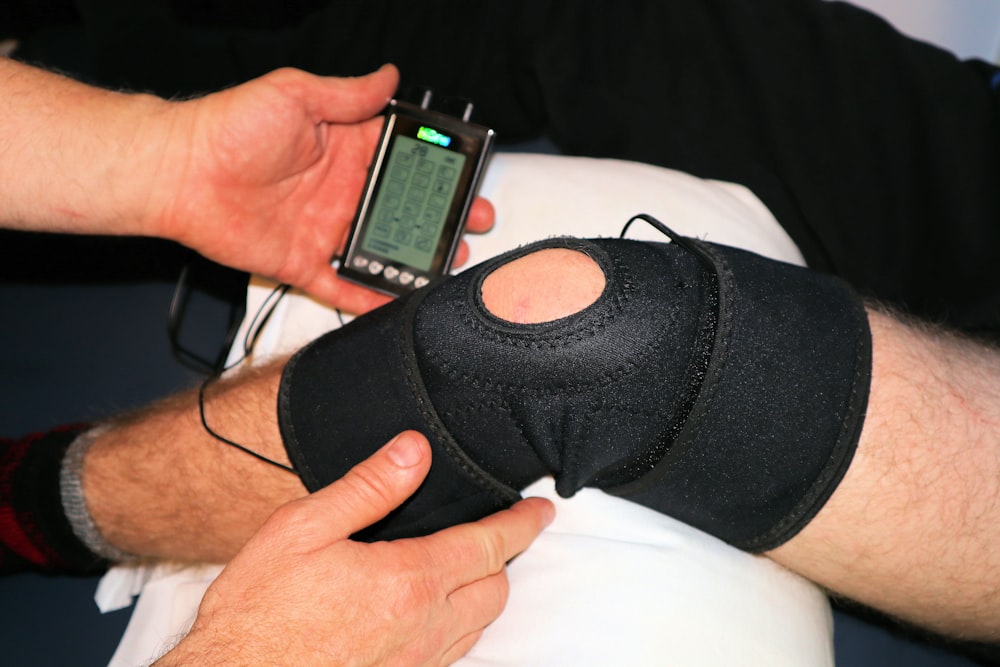目次
TKA後の大腿四頭筋腱の硬さが歩行速度に関連する?
人工膝関節全置換術後には関節のスティフネスが問題となることが少なくありません.
関節のスティフネスの原因にはさまざまなものが考えられますが,原因として大腿四頭筋の硬さが挙げられます.
今回はTKA後の大腿四頭筋腱の硬さが歩行速度に関連するかどうかを明らかとした研究論文をご紹介させていただきます.

今回ご紹介する論文
Medicina (Kaunas). 2021 Dec 4;57(12):1329. doi: 10.3390/medicina57121329.
Influence of the Amount of Change in Quadriceps Tendon Young’s Modulus on Amount of Change in Walking Speed before and after Total Knee Arthroplasty
Bungo Ebihara 1 2, HirotakaMutsuzaki 3, Takashi Fukaya 4, Koichi Iwai 5
Affiliations expand
PMID: 34946274 DOI: 10.3390/medicina57121329
今回ご紹介する論文は2021年に掲載された論文です.
研究の背景と目的
Background and Objectives: Walking speed after total knee arthroplasty (TKA) is an important outcome. However, the effect of quadriceps tendon stiffness on walking speed remains unclear. This study aimed to clarify the influence of the amount of change in quadriceps tendon stiffness on the degree of change in walking speed before and after TKA.
人工膝関節置換術(TKA)後の歩行速度は重要なアウトカムであります.
しかしながら大腿四頭筋腱の硬さが歩行速度に及ぼす影響については不明であります.
この研究では,大腿四頭筋腱の硬さの変化量がTKA前後の歩行速度の変化の程度に及ぼす影響を明らかにすることを目的としております.
研究の方法
Materials and Methods: Sixteen patients who underwent TKA for knee osteoarthritis participated in this study (median age: 74.0 years (interquartile range: 64.5-75.8)). Shear-wave elastography was deployed to measure quadriceps tendon stiffness using Young’s modulus. A motion analysis system was used to assess kinematic parameters and walking speed. Participants’ knee circumference, range of motion, extension strength, one-leg standing time, walking pain level, and activity level were measured preoperatively and one year after TKA, and changes in values were calculated. We used path analysis to clarify the influence of the amount of change in the quadriceps tendon Young’s modulus on the change in walking speed.
変形性膝関節症に対して人工膝関節全置換術を施行した症例16例(年齢中央値:74.0歳(四分位範囲:64.5~75.8))を対象としております.
大腿四頭筋腱の硬さを測定するためにヤング係数を用いたせん断波エラストグラフィを使用しております.
運動解析システムを用いて,運動学的パラメータと歩行速度を評価しております.
術前と1年後の膝周径,可動域,膝関節伸展筋力,片足立ち時間,歩行時痛の程度,活動量を測定し,その変化量を算出しております.
大腿四頭筋腱のヤング係数の変化量が歩行速度の変化に与える影響をパス解析により検討しております.
研究の結果
Results: The quadriceps tendon Young’s modulus negatively affected the knee flexion angle during swing (standardized partial regression coefficients (β) = -0.513, p = 0.042). The knee flexion angle during swing positively affected step length (β = 0.586, p = 0.017). Step length positively affected cadence (β = 0.733, p = 0.001). Step length and cadence positively affected walking speed (β = 0.563, p < 0.001, β = 0.502, p < 0.001, respectively).
大腿四頭筋腱のヤング係数は遊脚時の膝屈曲角度に負の影響を与え(標準化偏回帰係数(β)=-0.513,p=0.042),遊脚時の膝関節屈曲角度は歩幅に正の影響を与え(β=0.586、p=0.017),歩幅はケイデンスに正の影響を与え(β=0.733, p=0.001),歩幅とケイデンスは歩行速度に正の影響を与え(それぞれβ=0.563、p<0.001、β=0.502、p<0.001)ておりました.
研究の結論
Conclusions: The amount of change in the quadriceps tendon Young’s modulus may affect the degree of change in walking speed after TKA through the amount of change in the knee flexion angle during swing, step length, and cadence. Clinically, reducing quadriceps tendon stiffness can be addressed in rehabilitation programs to increase walking speed after TKA.
大腿四頭筋腱のヤング係数の変化量は,遊脚時の膝屈曲角の変化量,歩幅,ケイデンスを通じて,TKA後の歩行速度の変化の程度に影響を及ぼすと考えられます.
臨床的には大腿四頭筋腱の硬さを軽減することはTKA後の歩行速度を向上させるために有益であると考えられます.
今回はTKA後の大腿四頭筋腱の硬さが歩行速度に関連するかどうかを明らかとした研究論文をご紹介させていただきました.
パス解析を用いて要因間の因果関係を明らかにした興味深い研究ですね.
こういった研究がどんどん増えると理学療法士・作業療法士の臨床推論にも役立てられますね.






